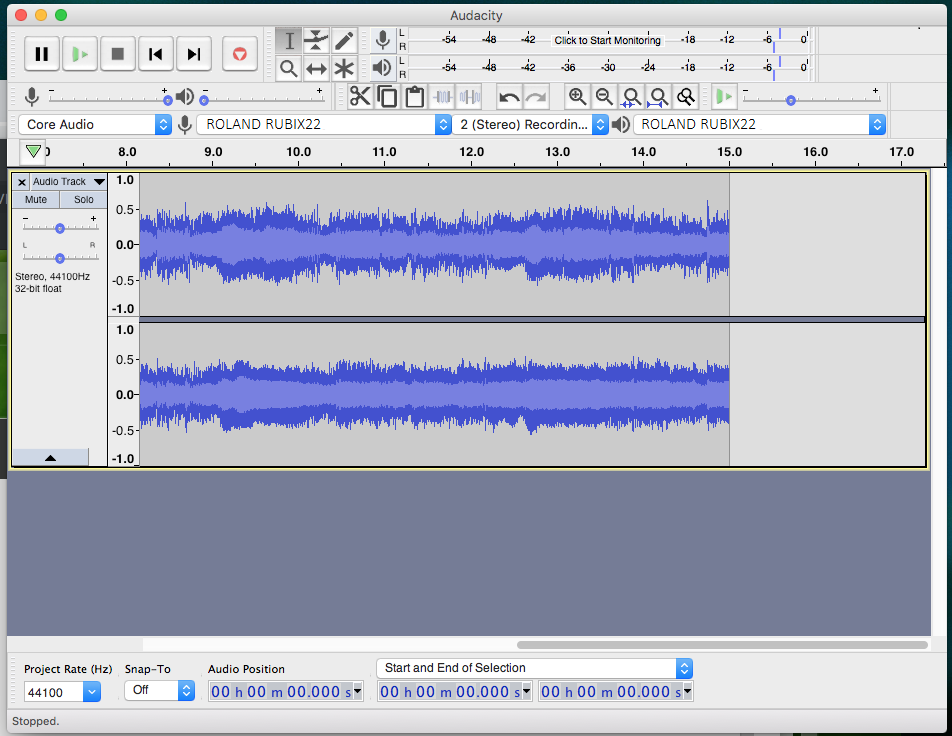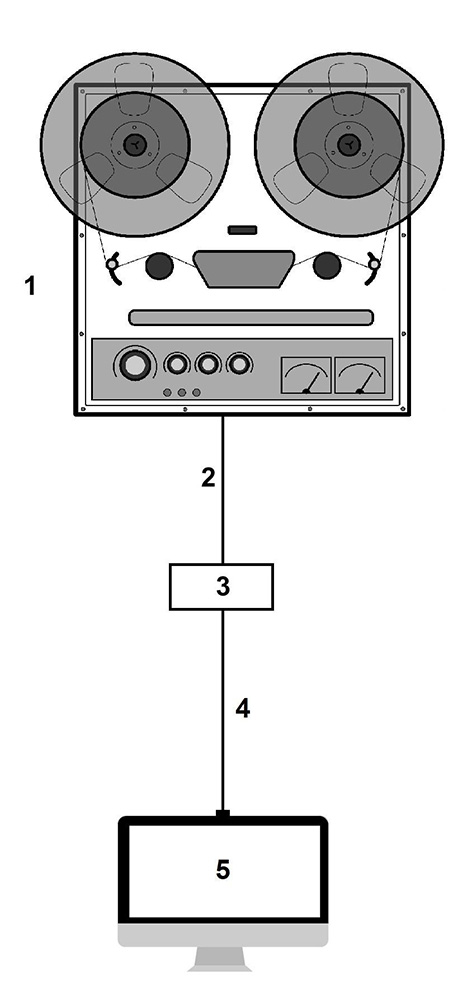Note: You must bring your own headphones if you want to listen to your audio tapes and transfers. If needed, you may check out a 3.5mm Stereo Jack to 1/4" Stereo Plug Adapter at the staff desk.
Step 1: Check out USB audio interface kit
- Connect the USB audio interface (Roland Rubix22) to the reel to reel audio deck using the supplied TRS-RCA cable.
- Plug the RCA end of the cable into the back of the player. Red goes in the right channel. White goes in the left channel.
- Plug the ¼” TRS end into the Roland Rubix22.
- Ensure that left and right channels are in sync.
- Plug USB adapter into the back of the Roland Rubix22. Plug the other end of the USB cable into the computer.
Step 2: Turn on reel to reel audio deck.
- Make sure the deck is on. Power button is on the lower left-hand side of the deck.
- When the button is pushed in, that means the deck is on.
Step 3: Load your reel
- You can watch a video of this process on a similar deck.
- Insert your supply reel onto the spool on the left-hand side of the deck. Thread tape outside the guide roller and over the auto-reverse as pictured:
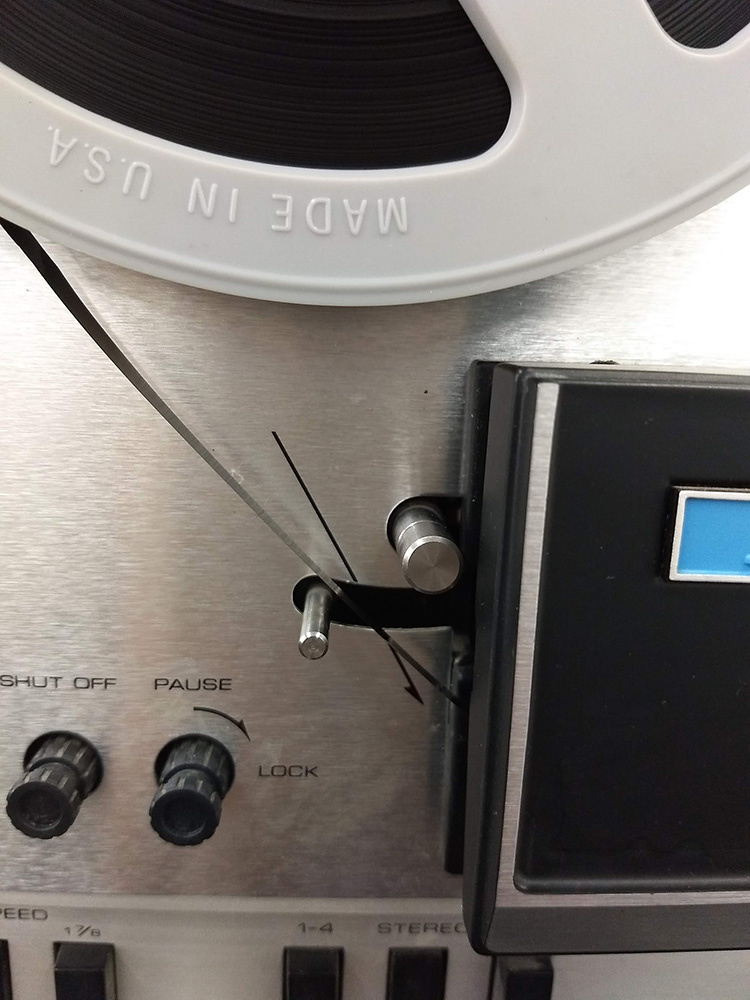
- Thread a few inches of the supply reel tape past the tape head area of the reel to reel tape recorder (under Servo Control Box).
- Thread tape between pinch rollers and capstan rollers as pictured:
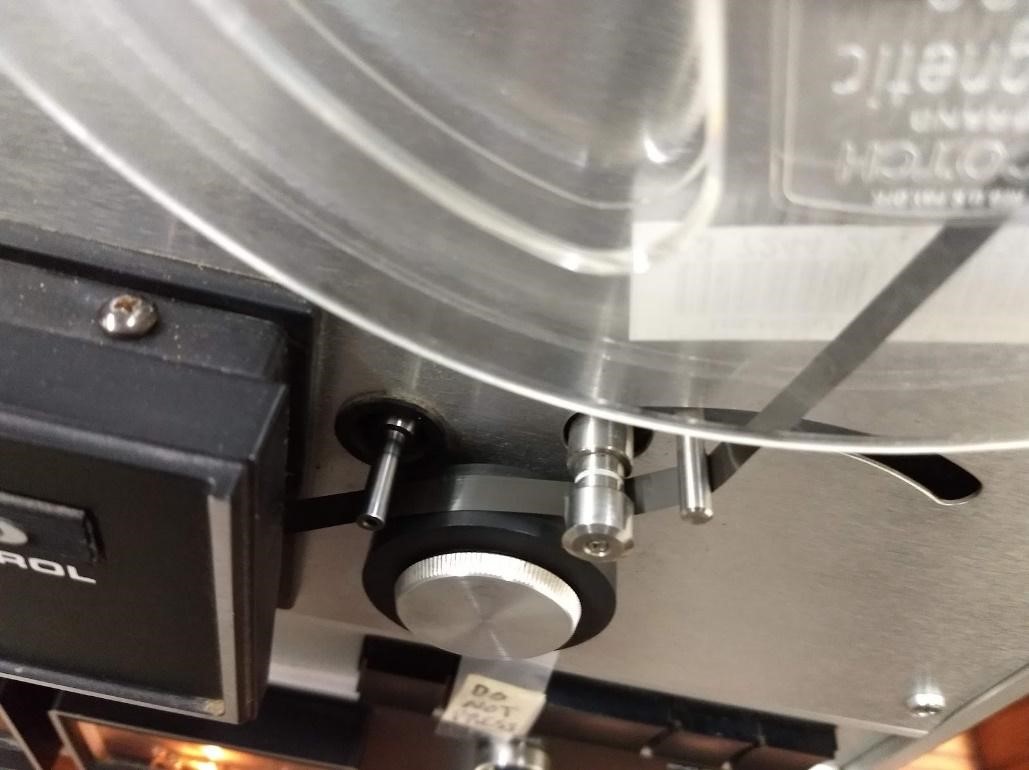
- There will be a slit in the empty take-up reel where you can thread the full tape. You can begin winding the take-up reel counterclockwise once it is secure.
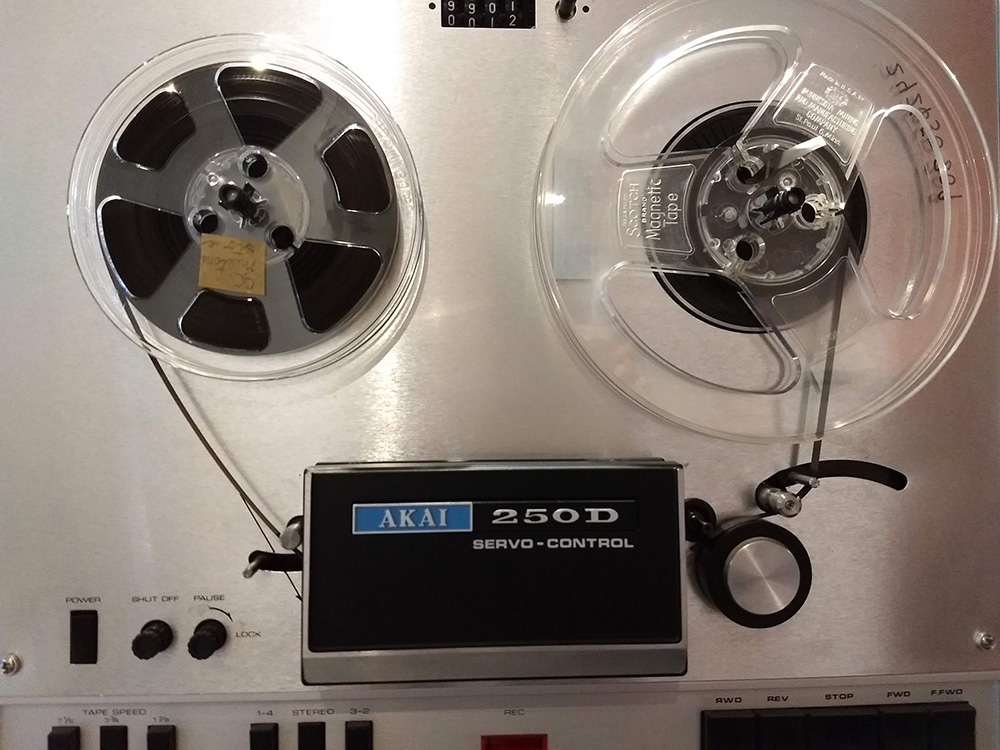
- There is sometimes a white or colored part of the supply tape of several inches (this is called leader), which does not have any recording. You may use this part as a marker regarding where you want to start to play the tape from.
Step 4: Open Audacity 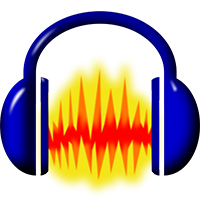
- Once you have logged onto the computer, double click the Audacity icon.
Note: If the icon is not there, search for Audacity and double click the icon that pops up. - Audacity will open up to a blank screen and monitors.
- Make sure of the following settings:
- [mic] and [sound] are both set to Roland Rubix22 and
- 2 (Stereo) Recording Channels or 1 (Mono) Recording Channel is selected, as appropriate
Step 5: Capture your audio
- Be sure the tape speed is set to the appropriate setting. Most open reel tapes play at 3 ¾ speed.
- Click on the words Click to Start Monitoring displayed over the numbers at the top of the Audacity window.
- Press FWD on the reel to reel deck. In Audacity, you should see green bars moving across the numbers as your tape is playing.
- If the bars are generally below the -15 mark or above the -3 mark (and showing some red), you will need to adjust the recording volume. You can also listen to the tape by plugging headphones into the tape deck’s headphone out jack.
- To adjust recording volume, move the slider next to the microphone icon toward the minus sign (softer) or the plus sign (louder), as shown below:

- Adjust volume on the left and right channels of the USB audio interface until the lights appear green.
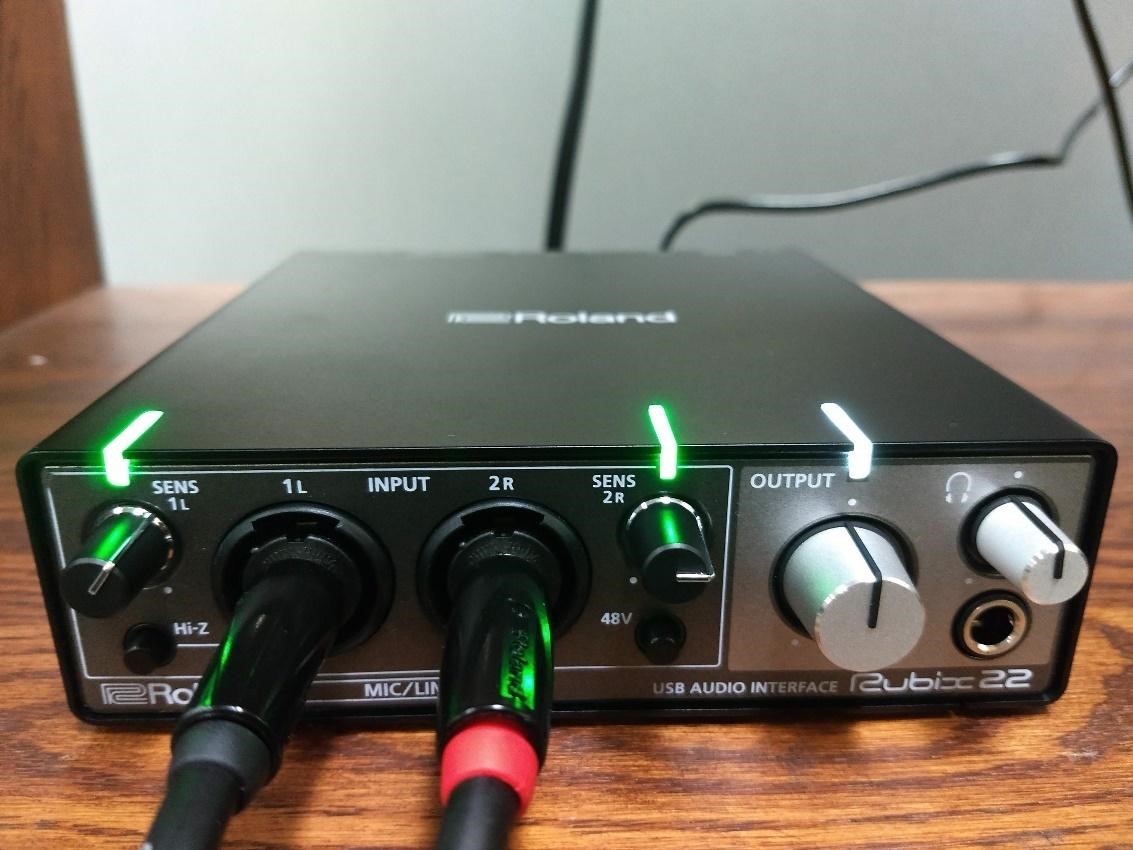
- Rewind the tape.
- Press the red RECORD button on Audacity first.
- Press FWD on the reel to reel deck.
- When you are done transferring, click on the STOP button in Audacity, as well as on the deck.
You should see activity in the window like that in the screenshot above.
Step 6: Save Your File onto your USB
- Make sure your USB is connected to the computer.
- Go to File > Export > Export as WAV in the Audacity menu.
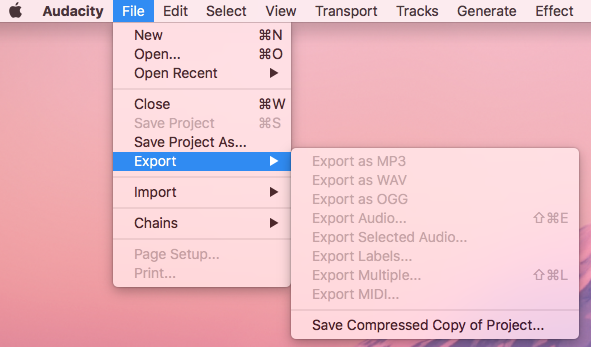
- Give it a name that is consistent and obvious.
- When you save the file, a window will appear for you to enter metadata (description info) about the file. Be sure to include how the file was digitized and who owns the rights to the recording.
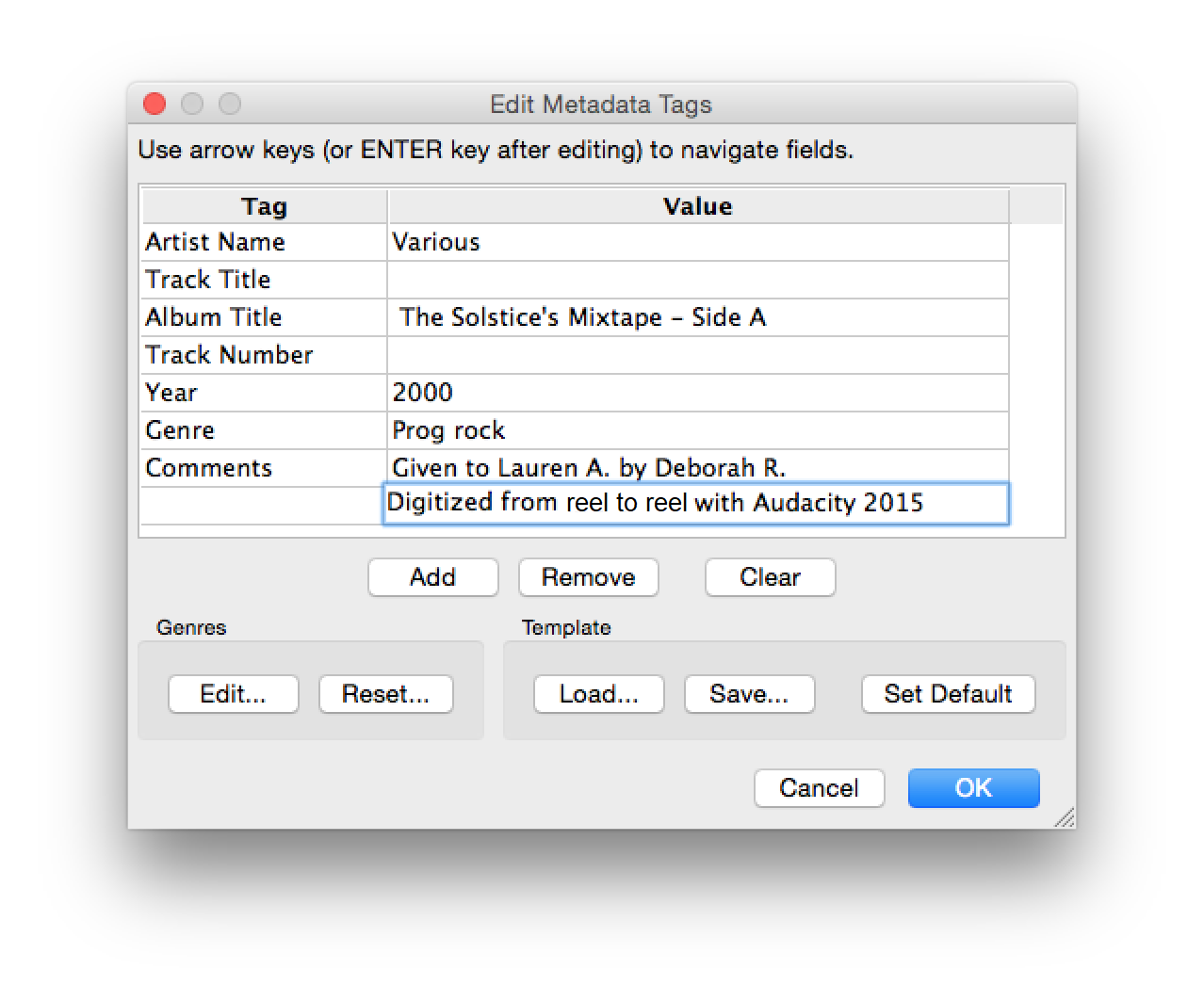
Step 7: You are done
- Rewind (RWD) your reel to reel tape and remove it from the deck.
- Return USB audio interface kit to Octavia Lab staff.
- If you checked out a 3.5mm Stereo Jack to 1/4" Stereo Plug Adapter, please return to Octavia Lab staff.
- Do not forget your USB and audio tapes.

